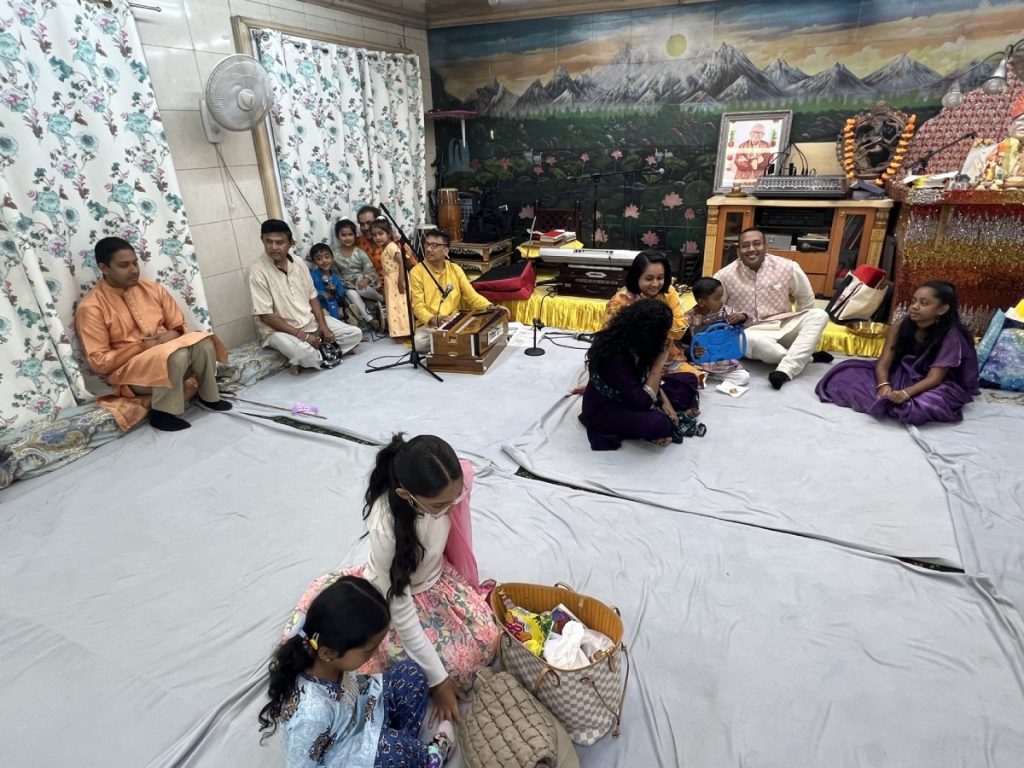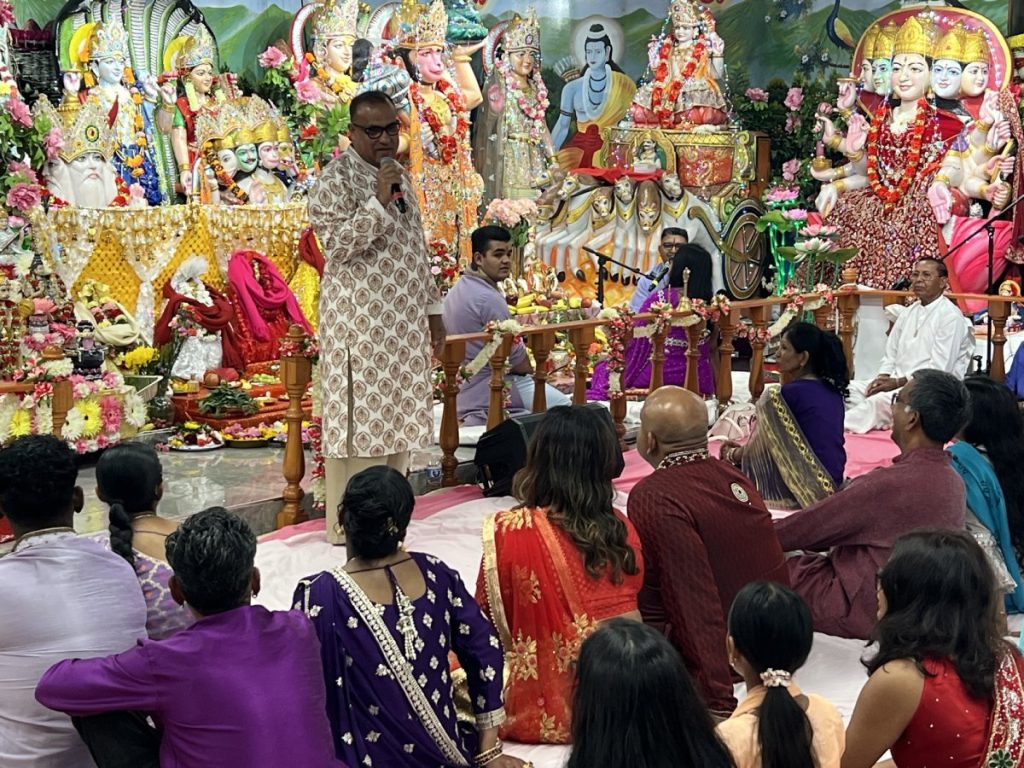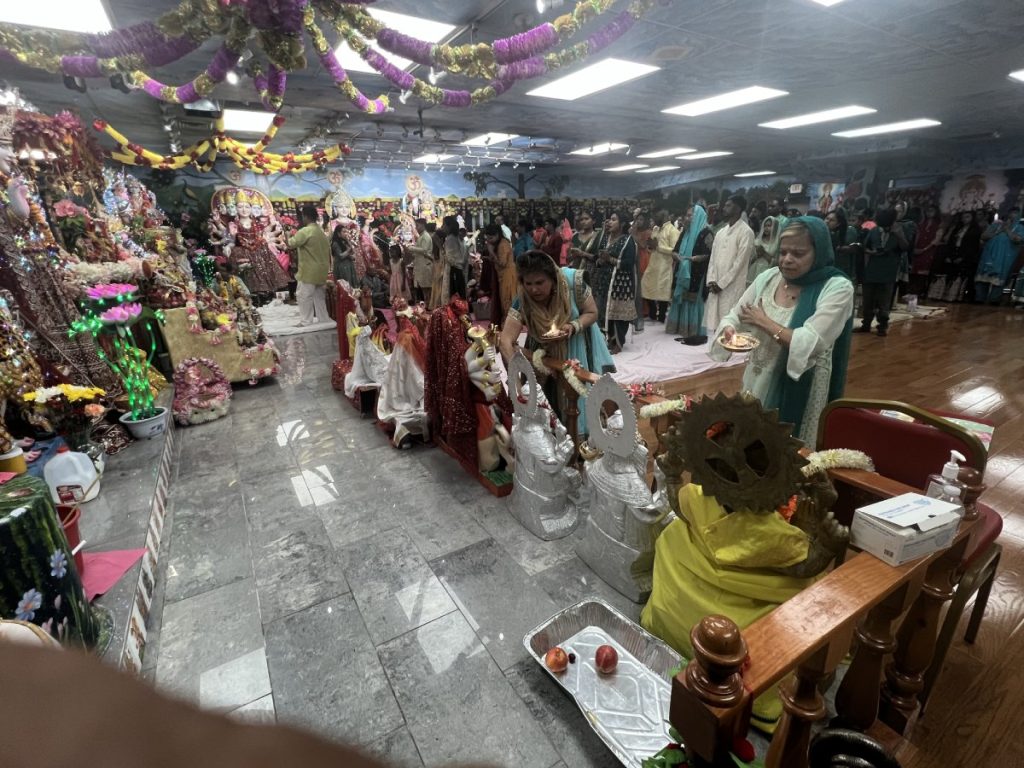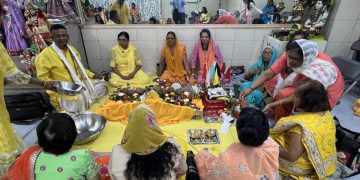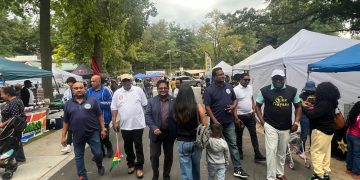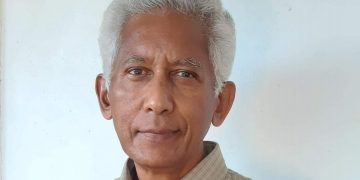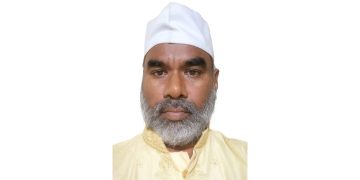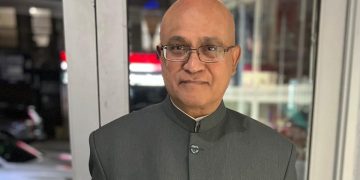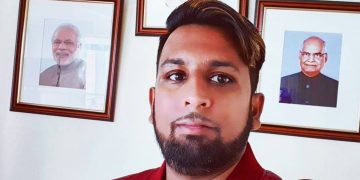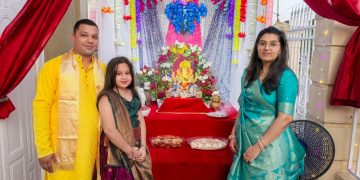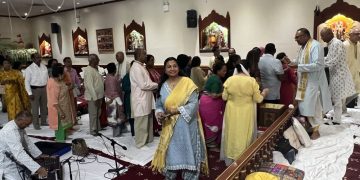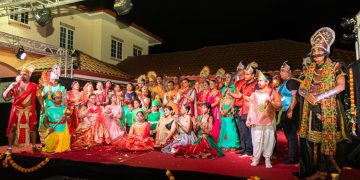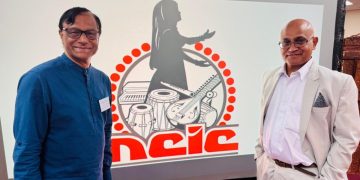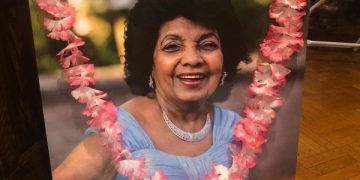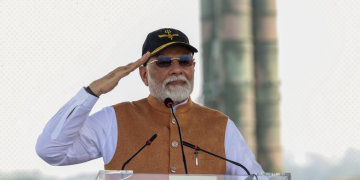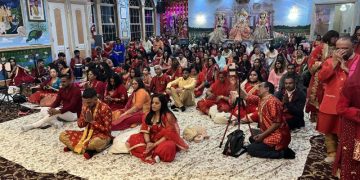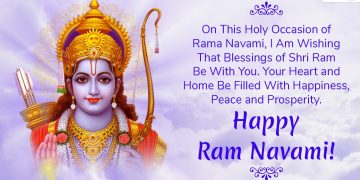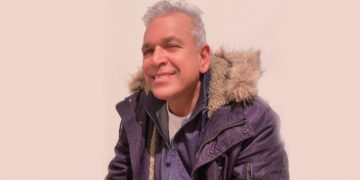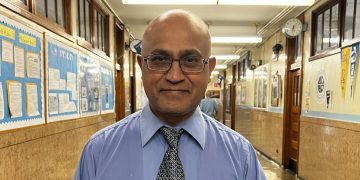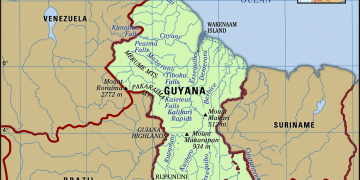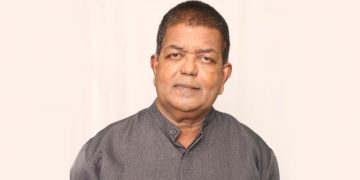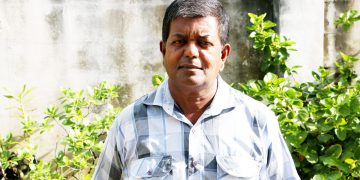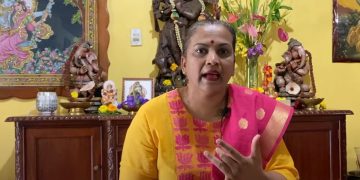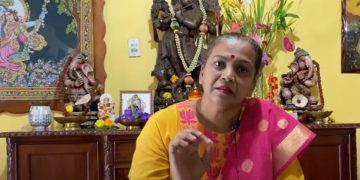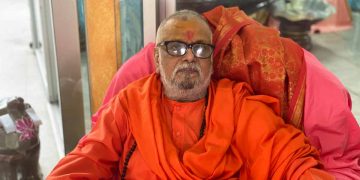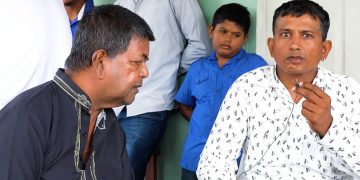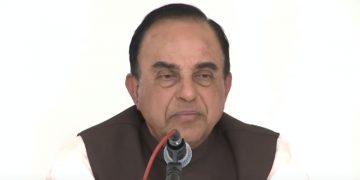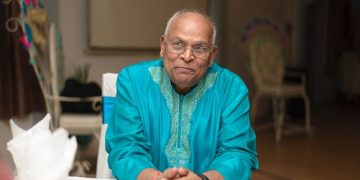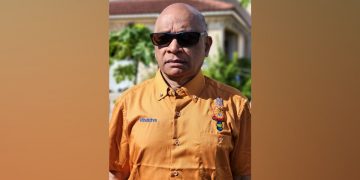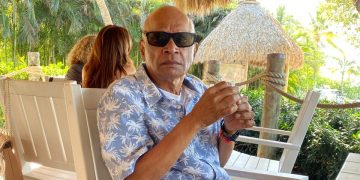Guyanese Hindus in New York and around the USA ended the holy period of fasting for Navratri with the celebration of Vijay Dashmi or Dussehra (victory to the lord) on Wednesday with some planning to celebrate Dussehra (burning the effigy of the demonic king Ravan who governed parts of India thousands of years ago). The fasting practice in Guyana has continued in USA among Hindus with some fasting for weeks or on selective days as prescribed in the scripture. Guyanese Hindus thronged mandirs in greater New York, Schenectady, Florida, Dallas, Houston, Boston, Jersey City, Atlanta, Minnesota, and other places; mandirs have been established in Guyanese communities across America where Hindu traditions from Guyana have been transplanted and become institutionalized. Hundreds of thousands of Guyanese are also settled in Canada, UK, the Caribbean where they have established places of worship, continuing traditions and practices as in Guyana. Guyanese have helped to institutionalize Hindu and Islamic festivals in parts of America, Canada, UK, the Caribbean, and Holland and France. Increasingly, they have been receiving support and recognition from politicians who graced their numerous festivals.
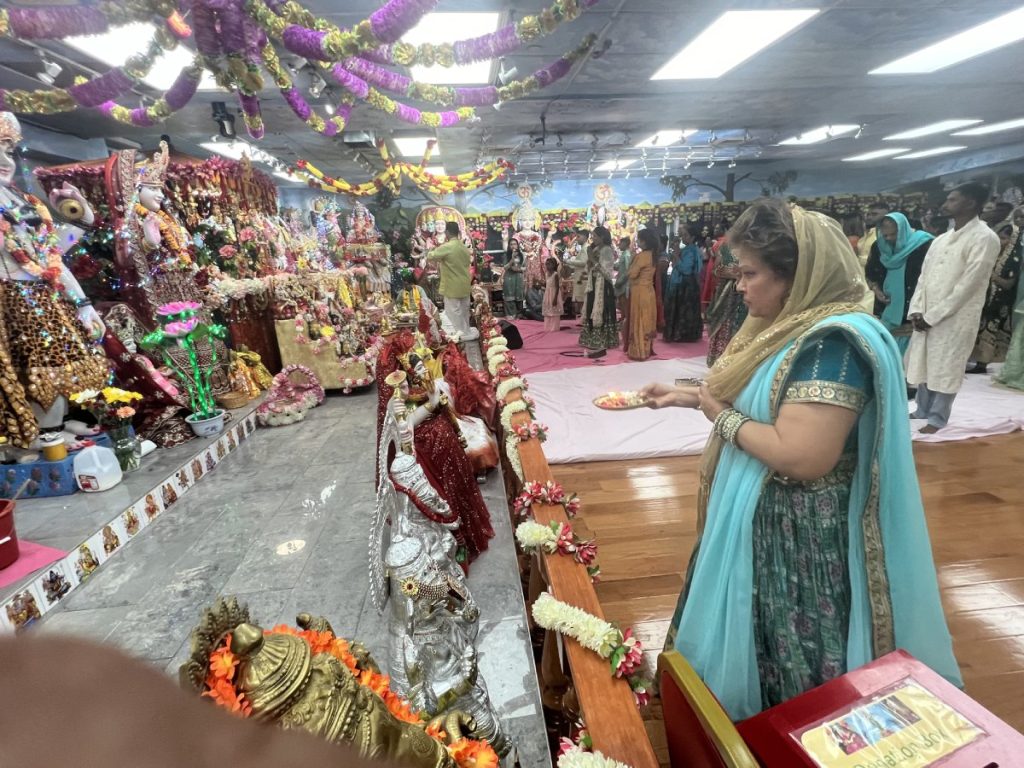
In September, Guyanese observed the ten days Ganesh festival, the two weeks Pitri Paksh paying homage to ancestors, the auspicious Navratri (nine days) festival followed by Vijay Dashmi or Dussehra (one day), concluding the period of fasting. The next fasting will be for Diwali (Oct 20) and Teerat (kartik) on the full moon later this month that concludes Hindu festivals for this year until February.
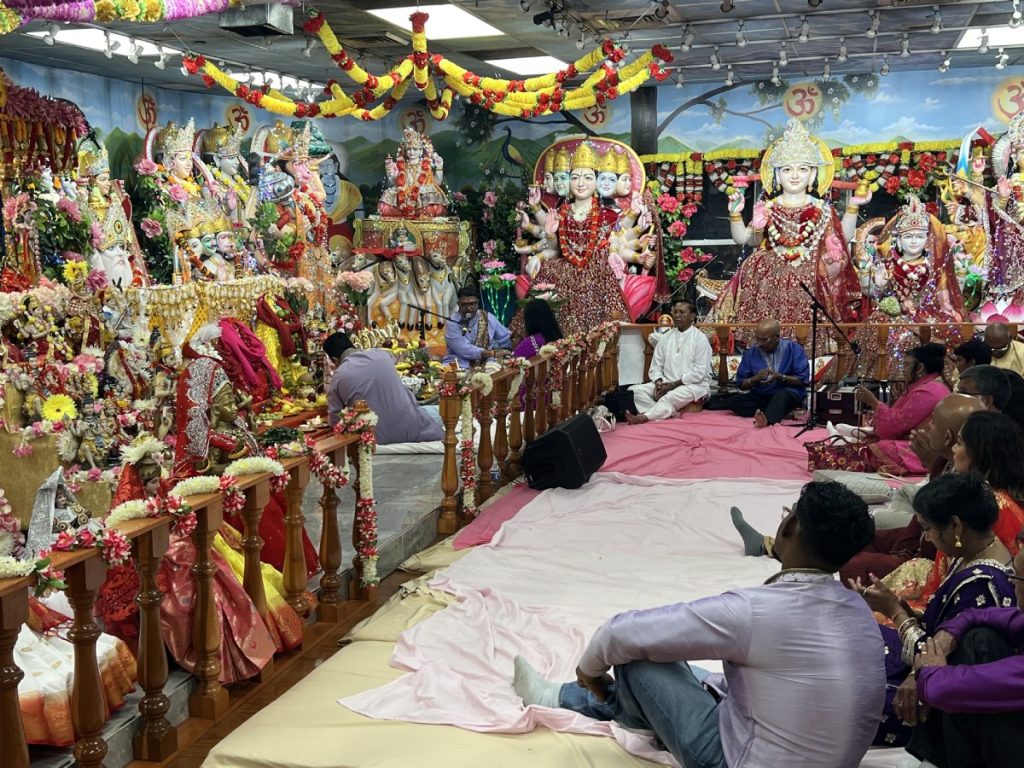
The observance of Navratri pays obeisance to the universal mother in which God is neither male nor female but can take either form. With regards to Navratri, the celebration included making offerings in the morning and evening over nine days — Nav means nine and ratri means night. It is a festival that is celebrated during the night with prayers and spiritual dancing and a discourse that also includes singing as took place in Guyana. The festival began on evening of September 22 and concluded on September 30 and extended into Dashmi October 1. Dayaram mandir on 192 Street in Hollis, Queens, and all Indo-Caribbean temples in the NY area held discourses and bhajan singing on the occasion. Temples were packed in Queens. People were nicely dressed in traditional colourful garb heading for the mandirs.
Navratri is one of the holiest periods in the Hindu calendar with people fasting, visiting mandirs, and performing pujas at home; many invited pandits to conduct special pujas at their home. People fasted during this period focusing on purification of the minds and bodies and making offerings to the lord.
Navratri is associated with the propitiation of the feminine aspects of the Almighty – clearly illustrating that Hindus do not discriminate among the sexes. Hindus pay obeisance to both male and female murthis representing their God or Goddess. But during Navratri, Hindus focus on worshipping the Goddesses Durga and her two feminine Lakshmi and Saraswati. Each Goddess is worshipped for three nights to offer protection (Durga), provide wealth (Lakshmi) and guide the devotee to knowledge (Saraswati) respectively. During Navratri, people becomes conscious of his/her faults, limitations and internal enemies such as lust, hatred, greed, jealousy, and anger, among others, and want to reform life. People make sacrifices fasting so they can become conscious of their faults and take corrective action. Through worshipping, these internal enemies are destroyed and are replaced by love, harmony, cheerfulness, compassion, devotion, and service to humanity or sewa.
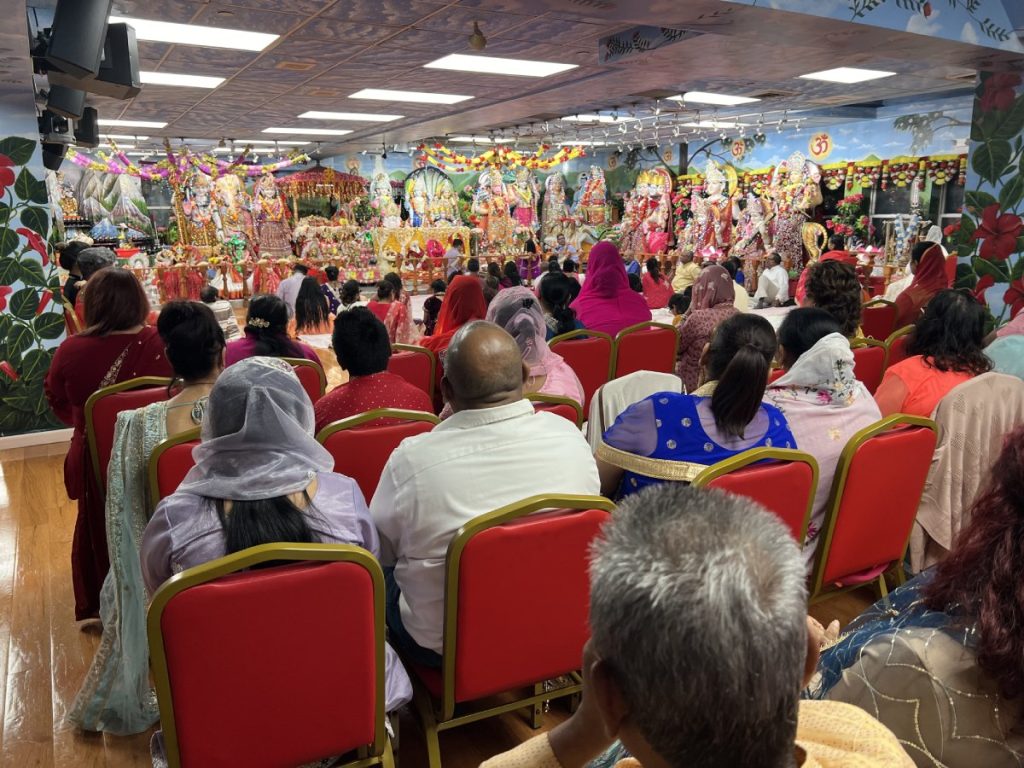
The celebration of Navratri is directly linked to other Hindu festivals like Ram Leela (worshipping Lord Rama) that will be celebrated right after Navratri which will be followed by Diwali and then karthik or Teerat. During Diwali when Goddess Laxmi is worshipped. Although Hindus pray to many Gods and Goddesses, there is only one God taking on many re-incarnations and names. Hindus believe they all represent the same one almighty God or Goddess who take different appearances for different purposes and came on earth at different times with different names to model an appropriate lifestyle for humans.
In New York, all of the temples held Navratri kathas and poojas. The popular Pandit Rajin Balgobind of Berbice held court under a tent at the Cheddi Jagan ground on 133rd Street, off Liberty Ave., attracting hundreds of worshippers nightly.
At the conclusion of every service at every mandir or other location, aartee was performed and dinner served.
